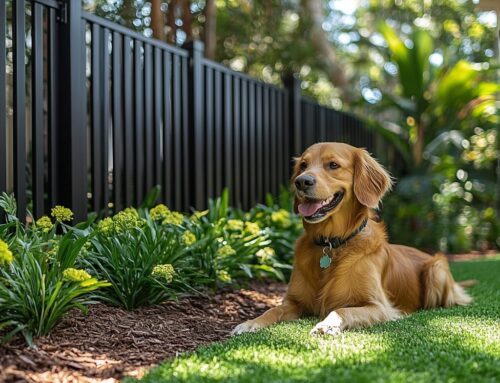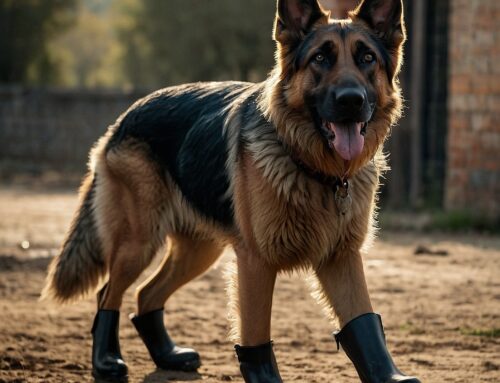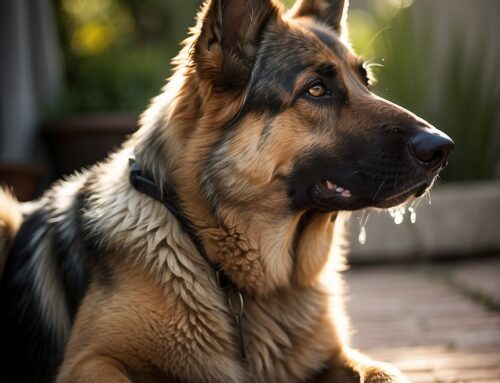How is it that a seemingly nondescript insect can wreak such havoc on our pets and in our homes? Fleas can indeed cause misery if they get a foothold on your pet or in your home. However, by understanding the flea lifecycle and employing a comprehensive flea preventative program, you and your pet can enjoy a summer season without the incessant itching, and more, that comes along with a flea infestation.
Why Is Flea Control Important?
In short, fleas make pets miserable, and if you are one of the unfortunate humans who is susceptible to flea bites, you know what this means. If you suspect your dog has fleas, you’ll notice that he scratches himself relentlessly. He may have sores or hair loss, and if he is completely infested, you’ll notice the flea dirt where he has been lying down. You will probably also see fleas moving around on his skin when you part his hair. Then there is the issue of disease and parasites.
Diseases Dogs Can Get from Fleas
Despite their diminutive size, these creatures can do more than create relentless itching for their pet hosts. Fleas are also known to carry the following parasites and diseases:
- Tapeworms
- Plague
- Typhus
- Anemia
- Iron Deficiencies
Flea Allergy Dermatitis
Some pets have severe allergic reactions to fleas and flea bites, a serious condition that can escalate dangerously. Flea Allergy Dermatitis, otherwise known as FAD, is a skin disease caused by your dog’s allergic reaction to the saliva of fleas. FAD is of particular concern during the summer months when temperatures are high, therefore creating the best conditions for fleas to cause infestations on your dog.
In addition to his constant scratching, you’ll also notice major loss of hair and open sores and scabs. The sores can then become infected by bacteria, which may elicit strange odors. The most likely areas where you’ll notice this condition are on the flanks and thighs of your dog.
The Lives and Functional Cycles of Fleas
It is not easy to get rid of a flea problem, and by understanding how fleas reproduce and multiply, you’ll see why.
The life cycle of a flea has 4 stages, which are as follows:
- Egg
- Pupae
- Larvae
- Adult flea
To dispel the notion that fleas jump from pet to pet, in reality, once the flea becomes a larvae, it finds a host, your dog, and stays there its entire life. When the weather is especially warm, the fleas exist longer, therefore prolonging your dog’s agony.
You Ask: Why Isn’t Your Pet Prevention Plan Working?
If you take another look at the ways fleas replicate, you’ll notice that they develop in stages. When the flea of one stage dies, the next is right there to take its place. In other words, you may think you are getting rid of all fleas on your dog, when, in reality, you’ve only succeeded in getting rid of a single stage which is just going to be replaced by the next stage.
In addition to fighting the fleas’ replication process, you may also be up against some other impediments to ridding you and your dog of the flea problem. Some of these include:
- Fleas in your home, especially rugs and upholstery
- Increased flea activity after a flea treatment
- More fleas finding refuge on your dog when he is outside.
A Complete Eradication Plan
The bad news is getting rid of fleas completely is a major undertaking. The good news is that, with diligence and persistence, you can be completely rid of fleas on your dog and in your home. Keep in mind too, that timing is key. In order to be 100% effective in getting rid of fleas, your dog, home, and yard all need to be treated at the same time.
The Environment
Besides on your dog, fleas reside in the environment, which could mean your yard, local park, and inside your home. In fact, 90 percent of the suspect fleas are coming from your yard and home. There’s not much you can do about treating the park for fleas, but you can effectively treat your home and yard to get rid of fleas.
There are a number of products and services available to treat your yard for fleas. You can find many quality options online or in big box stores. Likewise, there are flea control products you can use yourself or you can hire a professional pest expert to come in and do the job for you.
Prevention
It goes without saying that the way to avoid a flea infestation nightmare for you and your pet is prevention. Fortunately, there are many types and forms of products available, so then the dilemma becomes – which product is best for your dog? Some of the choice will be based on your preference, but you might also want to confer with your vet about what option will be best for your dog. Some of the types of flea prevention options are discussed below.
Flea and Tick Collars
Good flea control for your dog is as easy as fastening a collar around his neck. It’s important to get one that provides lasting protection. If your dog is a water buff, be sure to get a collar that is waterproof and can handle time in the sun while keeping your dog protected.
Topical Protection
Topical products are applied once a month, and some products provide protection against all phases of the flea life cycle. Be sure to get a waterproof formula so your dog can enjoy carefree summer romping in sun, sand, and surf.
Chewable Products
A one-time-only option, chewable tablets are amazingly effective at eradicating an infestation. One tablet paralyzes and kills fleas within an hour after your dog has ingested it. The advantage of this option is that you will see immediate results in stopping an infestation. Do keep in mind, that these tablets must only be given to your dog during severe infestations.
Natural Products
A number of natural remedies have proven to be effective at flea prevention and control. Consider some of the following:
Lemon juice: Use straight lemon juice on a flea comb to go through your dog’s hair.
Apple cider vinegar: Fleas hate this solution, so mix equal amounts of it and water in a spray bottle to use on your dog.
Essential oils: Add 10 to 20 drops of any of the following in a spray bottle to use on your dog’s coat:
- Citronella
- Tea tree
- Peppermint
- Eucalyptus
- Neem
Choosing the Best Option for Your Dog
A discussion with your vet about flea control and prevention is certainly the best place to start to ensure your pup stays comfortable and healthy all through the flea season.








